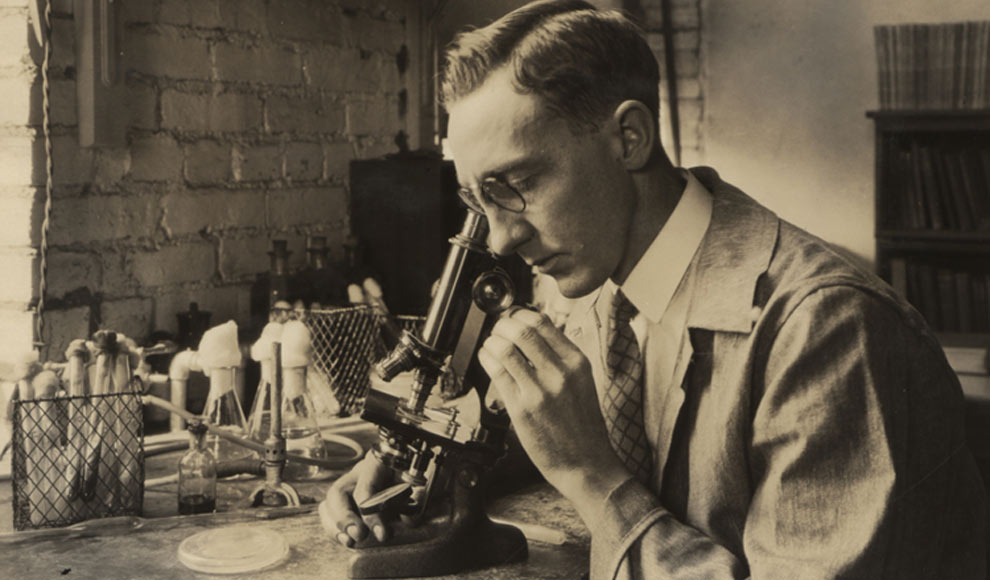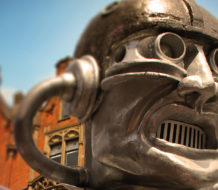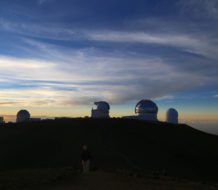Recent years have seen renewed attention to curiosity―recognizing, seeking out, and preferring things that are new, unusual, and outside of one’s normal experience. Curiosity includes two components, the mindful immersion component—rapt attention to interesting things and people—and the exploratory striving component—the desire to learn about whatever captured their attention. By increasing exposure to information and experiences that were not previously available, curiosity serves a broader function of building knowledge, skills, and social relationships.
When exposed to new information and experiences, there is often tension with prior ideas that may no longer fit. When our existing ideas about ourselves and the world are inadequate for integrating new information, this prompts us to revise our pre-conceived notions. These changes are in the service of broadening who we are, our relationships with other people, and the larger world.
What Leads to Curiosity?
People prefer to enter situations that match their perceived abilities to understand them. When something grabs your immediate attention, you ask two questions. These two questions and the answers to them are automatic, rapid, and occur on the fringes of conscious awareness.
First you ask: Is this object of my attention novel, complex, or uncertain? If you appraise an event as novel, this only leads to intense curiosity if you also believe that when encountered, this novelty is manageable. This is why the second question you ask is: Do I believe that the novelty, complexity, or uncertainty in this situation can be handled? Complex but incomprehensible events are experienced as confusing or aversive. Curious people excel at both detecting novelty and believing that they can handle this novelty. Without both of these beliefs, a person experiences something other than curiosity — boredom if novelty is undetected, confusion if one feels ill-equipped to cope effectively. This is important because it suggests a variety of strategies to help people become curious.
Many people excel at recognizing new, uncertain, complex, and mysterious things in their world. But we can all get better at this. If we want to increase curiosity, people must be taught to be mindful of gaps between what they know and what they think they know, and to be aware of how seemingly familiar situations possess some degree of novelty. No two conversations about the latest Martin Scorsese movie are the same. No two trips to a sushi restaurant are the same, even if you are with the same people ordering the same rolls. No two listens of “Release” by Pearl Jam are the same, as the feelings, thoughts, and images evoked are going to be different. Instead of labeling and categorizing what is familiar, you can be trained to focus more on the unknowns.
Even if people excel at recognizing novelty potential, they might be unable to tolerate the anxiety that arises in novel situations. If we want people to become more curious, we have to teach them to change their attitude about distressing thoughts and feelings. Some people become anxious about being anxious, and cling to structure, certainty, and the familiar in hopes of feeling calm. We can help people become more curious by providing a safe haven where their anxious feelings and thoughts are validated, understood, and cared for by another person. When they know they can comfortably express their discomfort, they are more likely to explore, discover, and learn despite the presence of uncertain outcomes. Unfortunately, too many leaders, parents, and teachers do the exact opposite by dismissing people’s anxiety as excessive or inappropriate. Remember that it is perfectly normal to be anxious when engaged in something that is new and meaningful. Nothing works worse as advice than telling someone to try to feel less anxious. Asking someone to avoid, conceal, or get rid of their anxiety will only make them more focused on their anxiety and in turn, more anxious.
Social Well-Being and Curiosity
Humans evolved in small groups, in which survival and reproductive needs depended on having close connections with others. Anything that increases the ability to form close connections and reduce the probability of social rejection served the function of ensuring that basic needs could be met. Only recently have scientists uncovered the importance of curiosity to satisfying a sense of belonging.
Social situations are often ambiguous and challenging. These qualities are the reason that social situations offer great opportunities for self-expansion. Partners who offer us greater self-expansion opportunities are more desirable. The desirable process of self-expansion often transfers over into the relationship itself, promoting behaviors that foster the development of meaningful relationships. When people feel their primary relationship partner is secure and responsive, they typically responds with a willingness to seek possible growth opportunities by exploring, learning, and taking risks (even in the presence of uncomfortable feelings).
Feelings of curiosity may build social bonds by promoting behaviors such as engagement, responsiveness, and flexibility to others’ varied perspectives. People who are more curious have been shown to experience energizing conversations with strangers that rapidly escalate in intimacy, and show impressive accuracy in discerning the personality traits of strangers after brief interactions.
When contemplating a conversation involving the exchange of facts with a stranger (e.g., what is your favorite holiday and why?) versus deeper, intimate conversations (e.g., if your house was on fire, what three things would you feel compelled to remove?), more curious people expect to feel closer to partners after the intimate conversation than less curious people. The curious people use a number of strategies to regulate interest including being provocative, injecting humor, a willingness to disclose personal information and encouraging partners to do the same, openly expressing feelings about the conversation, and intentionally searching for interesting details about their partner. Thus, the healthy social outcomes of people with more curiosity appear to be the result of their intentional efforts to create interesting, enjoyable opportunities for both them and their partners.
As another example of relationship enhancing behavior, when something interesting happens to us, sharing it with other people (who are good listeners) can transform memories of the event. Describing an interesting event to others serves to strengthen our own curiosity and make it more salient. The intrinsic value and motivation for a given activity can be increased through this socialization process.
Observers recognize the strengths (and weaknesses) of people with more curiosity. Highly curious people tend to initiate humor, exhibit highly intelligent behavior, show few physical signs of anxiety, and be openly expressive of thoughts, feelings, and ideas with others. Highly curious people are prone to unconventional thoughts, a high frustration tolerance, and a non-defensive, non-critical attitude toward themselves and others. But these strengths are tethered to a few ambiguous personality qualities such as being rebellious and less protective of others close to them (which might reflect a willingness to let others explore, make mistakes, and learn).
Overall, there is evidence that curiosity is useful in all stages of relationship development. Curiosity promotes behaviors such as playfulness and humor initiation that create positive, enjoyable social interactions. In general, curious people are viewed as socially adept. Because of their drive for novelty and new information, curious people often ask engaging questions, conveying genuine interest in their conversation partners, which generates a sense of closeness. In addition to aiding the development of new relationships, curiosity can help maintain passion in long-term relationships. Curious people are also better able to handle conflicts in relationships without responding aggressively and by taking a more open and receptive perspective, curious people are less likely to feel threatened by conflict or aggress toward others following provocation.
While the list of benefits linked to curiosity is lengthy, an insatiable appetite for new and different experiences can have risks. Sometimes this appetite can lead people down the pathway to dangerous and maladaptive behaviors such as unsafe sex or substance abuse. Also, while other people’s perceptions of curious people are generally positive, curious people tend to be viewed as more rebellious, nonconforming, and undependable. These qualities can impede success in domains where more traditional values are favored.
Psychological Well-Being and Curiosity
The question of how to develop sustainable increases in well-being is important to humans living amidst everyday challenges and suffering. The functions of curiosity make it an ideal candidate for signaling and producing well-being. Upon seeking and investing effort in novel and challenging activities, people with greater curiosity expand their knowledge, skills, goal-directed efforts, and sense of self. Feeling curious also appears to increase tolerance for distressing states of self-awareness that result from trying new things and behaving in ways outside of one’s comfort zone. Using cross-sectional and laboratory research designs, people scoring higher on trait curiosity consistently report greater psychological well-being. One theoretical model suggests that people with greater curiosity are more selective of and responsive to activities that are personally and socially enriching, leading to the building of durable social, mental, and physical resources.
Curiosity allows people to engage more deeply with potentially enriching people and experiences. A recent experience sampling study, for example, examined how being in nature influences positive mood. The effect of nature was moderated by fascination, measured essentially as interest: nature had its strongest effect on positive mood when people reported that the natural environment was interesting, thus evoking engagement and exploration.
Although the results in this area of study are appealing, the list of constructs associated with well-being is enormous, and it will be important to evaluate whether theoretical models of curiosity provide insight into why curiosity is particularly beneficial. To winnow the large number of psychological constructs with ties to well-being, researchers need to examine them simultaneously over time. In a recent study with an international sample of 755 individuals, 10 psychological strengths (including curiosity) were tested for their ability to predict goal attainment as well as predict the greatest changes in well-being that result from goal attainment. All 10 strengths were administered twice over the course of a year, along with measures of goal attainment and subjective well-being. As for which of the 10 strengths uniquely predicted changes in goal attainment over six-month periods, the answer was curiosity and grit. However, since people sometimes become passionate about the wrong goals with few benefits, the more important question was – which strengths boosted the effects of goal attainment on subjective well-being? The only strength to boost the effects of goal attainment on subjective well-being across a six-month time period twice was curiosity. Thus, the salutary effects of curiosity emerged as more enduring and consistent than the other nine psychological strengths under study. By no means was the list of strengths related to well-being exhaustive and there are other important outcomes to consider besides those in this study – increases in life satisfaction, positive affect, and negative affect. That being said, this international, longitudinal study is a promising extension of smaller studies on how curiosity enables people to find continual sources of enjoyment and satisfaction in meaningful life pursuits.
To understand how curiosity is linked to well-being, there are a number of discrepancies that still need to be resolved. For example, some research suggests that the pleasures of curiosity are derived from resolving ambiguity and uncertainty, whereas other work finds that the process of discovery and meaning-making is intrinsically enjoyable and that positive emotions can be sustained by intentionally attending to the lingering uncertainty in a given situation. The resolution may arise from a consideration of important environmental contingencies that influence the presence and duration of curiosity (e.g., betting a paycheck on a single football game, having a deadline to review a mystery novel).
Conclusion
There is mounting evidence that curiosity is important to understanding lives that are well lived. The best way to understand this is to imagine what life would be like without the experience of curiosity. There would be no exploration of the self and world, introspection, imagination, aesthetic appreciation, search for meaning in life, and to some degree, personal growth.
In several studies in my research laboratory, I have found that people who are more curious possess a number of adaptive attributes including a greater ability to be angry without resorting to aggression, strong intellectual capacity, less tendencies to judge, criticize, and blame other people, a receptive attitude toward ideas and perspectives different from their own, a strong sense of humor and playfulness, and a tolerance of distress that is visible to parents, friends, and strangers. If we want to enable people to thrive, if we want positive leadership, if we want healthy relationships and communities, it is time to seriously invest in curiosity. The greatest currency at our disposal is our attention and energy and we can learn to spend it more wisely. By becoming curious, we become more profitable in terms of greater success and well-being.
Discussion Summary
In my last article, “Is Curiosity Essential for Human Flourishing?” I wrote about what scientists have uncovered about whether, how, and when curiosity is relevant to well-being. In this adjoining piece, I want to offer a brief agenda for the future study and application of curiosity.
Despite over a century of scientific theory and research, there is much that remains to be known about curiosity. First, without question, there is a need for more innovative assessment strategies. Most of what we know about curiosity is about asking people how they think or behave. This approach needs to be supplemented by unobtrusive measures and slices of ecological behavior. For instance, a portable video or audio-recorder can be attached to a person’s shirt or ear while people go about their daily lives. By tracking moment-to-moment images or sounds, we can obtain logs of what situations people enter, what people they interact with, and what tasks they pursue as they naturally unfold. This information can be viewed or listened to by the people collecting information who then tell stories about what happened and why. This kind of detailed information can offer a glimpse into what very curious people do that is different from the rest of society, and offer insights into the kind of experiences and environments that foster curiosity (instead of boredom, apathy, or anxiety). Besides these naturalistic observations, scientists also can examine differential activation of biological processes linked to reward sensitivity and exploratory behavior (e.g., dopaminergic agents, left prefrontal cortex asymmetry) in response to stimuli characterized by novelty, complexity, and uncertainty. What we need to know is what happens right before feeling curious and what happens right afterwards to understand how curiosity can lead to well-being, as well as some of the less healthy outcome such as dangerous risk-taking and intrusiveness into other people’s lives (such as stalkers and those that gossip incessantly).
Second, the mechanisms linking curiosity to hardened outcomes such as mortality, academic and work productivity, creativity, and physical health and illness have yet to be clearly outlined. For example, why should highly curious people live longer than their less curious peers? Several hypotheses can be generated, such as the process of neurogenesis stemming from regular participation in novel and intellectual pursuits, a non-defensive willingness to try less traditional treatments and health strategies, or the psychological benefits of viewing stressors as challenges with a default motivation to explore instead of avoid them.
Third, refinements in assessment and basic research should be in the service of working toward the discovery of how to cultivate curiosity in meaningful life domains. Of particular importance is finding alternative ways to aid people suffering from fear, apathy, intolerance of uncertainty, and lives controlled by avoidance and other forms of over-regulation. I would argue that fostering curiosity may be a useful supplement to treatments designed to increase self-awareness and introspection, cope with and derive meaning from painful life events, and increase recognition and reactivity to the rewards that are often ignored or avoided in everyday life. In the ideal, research on curiosity will no longer be the province of psychologists, but will include allied health professionals invested in applying knowledge to prevention and treatment, educators given the task of teaching children and adults, and anyone interested in persuading and influencing human beings to improve society.
How can I write about the importance of being curious without offering at least two additional Big Questions worthy of future essays?
New Big Questions:
- How can incompatible worldviews coexist? I am thinking about evolutionary and religious perspectives. I am thinking about the hundreds of different religious ideas about deities, virtues, and sins. But the list goes on much further than this….
- What is the best way to use and hone intuition?












Another interesting topic, I see. I’m curious, though. They say curiosity killed the cat, no? But what about Schrodinger’s cat? Is it dead or alive? While this sounds slightly silly, the philosophical issues behind this issue and this topic are immense. One quick read on the topic is a 2002 book by G.E.R. Lloyd, The Ambitions of Curiosity: Understanding the World in Ancient Greece and China (Cambridge University Press). But there is an infinity of infinities of depth (and writings from thousands of years ago to the present) on this topic. I just though my attempted witticism about Schrodinger’s cat sums up the matter rather nicely. There is a direct line, for example, to the “philosophy of science” questions posed by many scholars; and the ideas of the history of science and the theories about curiosity cannot possibly be discussed as independent of each other, just as the observed and the observer (and the effect of each on the other) cannot. Best regards.